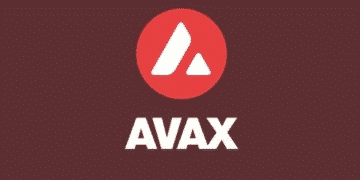Lido warned traders at risk of liquidation after the staked Ethereum lost its peg due to a surge in redemptions which caused the mess so let’s read more today in our latest Ethereum news today.
Lido warned traders that the token’s peg to ETH slipped and they are at risk of having their collateral liquidated or even sold. When Lido initailly sent the warning, the discount was 4.2% and went up to 5% before falling. Right now, 1 ETH can be exchanged for 1.0248 stETH via the Curve protocol which emans it is trading at a 3% discount relative to ETH. The stETH price surged as people who staked in the Anchor lending protocol that runs on the defunct Terra blockchain, rushed to retrieve it on Friday.
Long term stETH holders are perfectly fine – stETH does not have to have price parity to function.
Liquidity providers are not at risk, and are positioned to collect trading fees.
Leveraged positions on stETH are at risk.
— Lido (@LidoFinance) May 13, 2022
The terra network was halted twice in the past day as an attempt by the developers to save the network and the native assets from crashing further, especially now after the Terra UST stablecoin lost its peg. Terra’s collapse had crushing effects on the entire market, for example, the network was halted and if that happened it would have been impossible for Lido users to retrieve their stETH. Lido offered advice on how to get stETH off the Terra blockchain but the damage was already done.
As long as stETH is trading at a discount, people can redeem their stETH for more ETH than they deposited which means there will not be enough ETH in the pool to back everyone’s stETH. For people that take their Ethereum and received stETH in exchange, the discount doesn’t pose a risk but traders with the leveraged positions used their stETH as collateral for a loan and could ba risk of the discount grows enough to start the liquidation of their Ethereum:
“You should urgently de-risk any leveraged positions that have a challenging health factor, for example, by adding extra collateral.”
When the users stake their ETH with Lido, they receive staked ETH equal to the amount of the initial deposit so the stETH increases in value daily as it earns rewards and is now at an annual percentage rate of 3.6% whcih creates an incentive for stakers to keep their ETH in the pool. If the value of the loan increases a lot relative to the collateral, the portion of the collateral can be sold to maintain the loan to value ratio which is what determines how someone can borrow the value of the tokens they put up as collateral.
Wormhole’s Portal UI can be confusing, as webAssets are shown as bAssets. To make sure you’re bridging the right tokens, use the following contract addresses:
webETH terra1u5szg038ur9kzuular3cae8hq6q5rk5u27tuvz
webSOL terra1c3xd5s2j3ejx2d94tvcjfkrdeu6rmz48ghzznj
— Lido On Terra (@LidoOnTerra) May 12, 2022
Staking 1 ETH with MakerDAO allows users to borrow funds equal to 0.60 ETh in the form of the DAI stablecoin and there are now $410 million wrapped stETH or wstETH deposited there. At AAve, there’s a $2.9 billion pool of deposited stETH and the protocol allows the users to borrow ETH or other tokens equal to 73% of the collateral.
DC Forecasts is a leader in many crypto news categories, striving for the highest journalistic standards and abiding by a strict set of editorial policies. If you are interested to offer your expertise or contribute to our news website, feel free to contact us at [email protected]























Discussion about this post